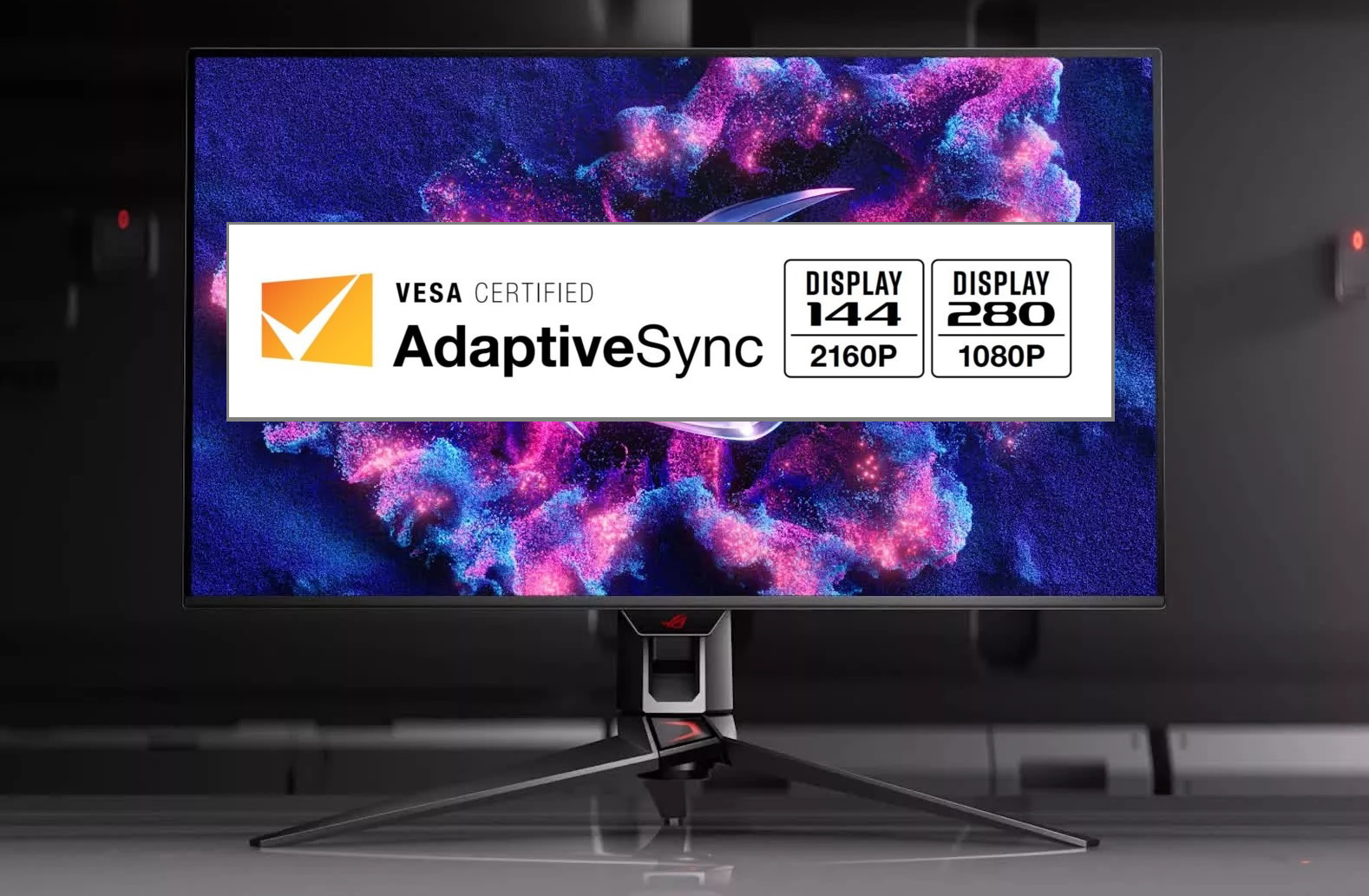VESA updates their Adaptive-Sync standard to version 1.1a for “Dual-Mode” gaming monitors
VESA paves the way to broader “Dual-Mode” support with their Adaptive-Sync 1.1a standard
VESA has today updated their Adaptive-Sync standard to account for the introduction of so-called “Dual-Mode” displays to the monitor market. “Dual-Mode” monitors can support different maximum refresh rates at different resolutions. For example, ASUS’ upcoming ROG Swift OLED PG32UCDP supports up to 240Hz refresh rates at 4K, and up to 480Hz at 1080p. LG has also revealed a similar Dual-Mode monitor called the UltraGear 32GS95UE OLED.
Dual-Mode monitors give users the option to target higher screen resolutions or higher screen refresh rates. This is useful for gamers who want the fastest refresh rate for competitive games like Counter-Strike 2 and want higher levels of on-screen detail for slower-paced, single-player titles.
VESA’s Adaptive-Sync 1.1a standard has updated the group’s testing methods to test both modes of so-called Dual-Mode monitors. The standard also displays these monitor specifications as part of their certification logo. This logo should appear on the boxes of certified displays.
Adaptive-Sync Display version 1.1a provides updated testing procedures and logo support for an emerging category of displays that can operate at different maximum refresh rates when resolution is reduced. This optional “Dual Mode†testing and logo support allows display OEMs with qualifying hardware to certify their products at two different sets of resolution and refresh rate (for example, 4K/144Hz and 1080p/280Hz).
Adaptive-Sync Display v1.1a also includes an update that allows display OEMs to achieve a higher AdaptiveSync Display refresh rate certification for displays that support an “overclocked†or faster mode option that is not enabled by default in the factory configuration. In such cases, the overclocked mode must support Adaptive-Sync-enabled GPUs in a non-proprietary manner, and the display must pass all of the rigorous Adaptive-Sync Display compliance tests in both its factory default mode, and completely retested a second time in the overclocking mode. Both the dual mode and overclocking changes to the Adaptive-Sync Display CTS v1.1a only apply to the VESA Certified AdaptiveSync Display logo program; they do not apply to the VESA Certified MediaSync Display logo program.
Version 1.1a of VESA’s Adaptive-Sync standard also updates their certification process to account for displays with a faster “overclocked” mode. These tests will ensure that these modes support Adaptive-Sync and do so in a non-proprietary manner. Like Dual-Mode testing, Overclocked mode testing effectively doubles the testing that displays must go through for VESA certification.
You can join the discussion on VESA’s Adaptive-Sync 1.1a standard on the OC3D Forums.





